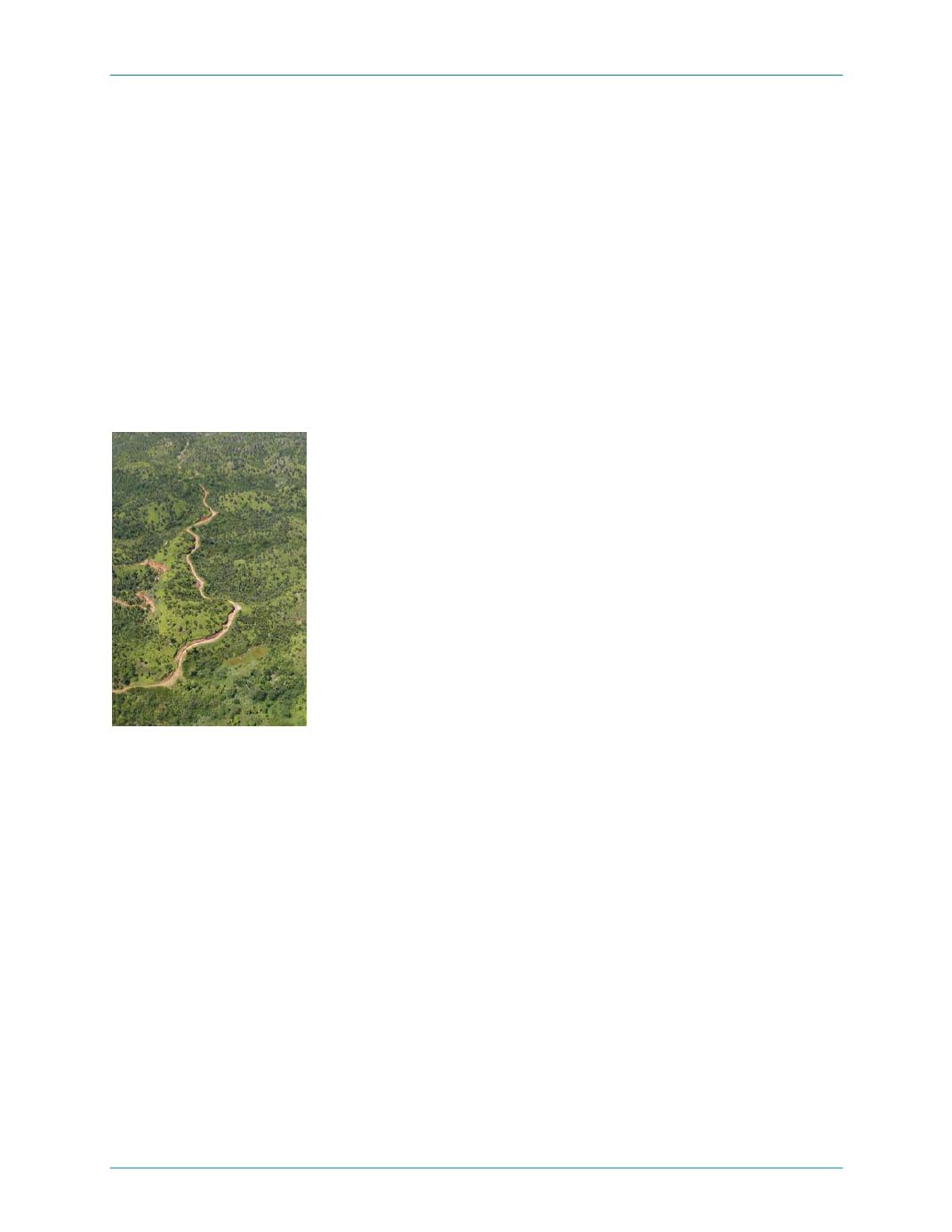
Summary
The streams and rivers at the site contain the headwaters of three sub-
basins of the Ambolona watershed. Drainage flows in an easterly
direction in the valleys along a natural gradient of less than six degrees
(10%). The mean annual precipitation is about 3,300 mm. March is the
wettest month (473 mm) and October is the driest month (115 mm).
Estimates of maximum 24-hour rainfall amounts range from 273 mm
once in 10 years, to 465 mm once in 100 years.
Based on the Madagascar classification system, baseline surface water
quality in the tailings facility area is typically classified as moderate
(Class B), with some watercourses classified as poor (Class C). There
were no surface waters that are considered to be excessively
contaminated (Class HC). Manganese was the only water quality
substance with some observed baseline concentrations above the WHO
drinking water guideline value.
Aerial view of tailings facility
area
Tailings area soils are naturally acidic, low in nutrients and well drained
on upper slopes. Soils in the depressions are often water-logged with
some peat accumulation. Although nutrient poor, these depression soils
are suitable for rice production.
The vegetation is composed of secondary habitats influenced by an
array of human-induced disturbances, mainly agricultural. Due to the
disturbed nature of the area, many plant species are invasive and
common within the region. One tree species present (pallisandre) is
identified as vulnerable by IUCN, but is a widespread species in
Madagascar exploited for its valuable wood. No locally endemic plants
were found.
Biodiversity in the tailings area is mainly linked with the remaining natural
wetlands. Wetlands in the tailings area had the highest number of
amphibian and reptile species and the second highest richness of bird
species, compared to other habitats. Seven amphibian and 11 reptile
species were recorded within the tailings area, none of which were listed
by IUCN. One amphibian and five reptile species are listed by CITES.
Fifty-two bird species were documented, of which two are IUCN-listed
and five CITES-listed.
All aquatic sampling sites in the tailings area exhibited significant
disturbance and loss of natural ecosystem function. Much of the valley
bottom area and associated stream habitat has been developed into rice
paddies. However, 17 fish species, comprising five endemic, four native,
and eight introduced species were collected from the tailings area, which
is actually similar to the mine site. One species of Madagascar
rainbowfish (
B. madagascariensis
) was the most abundant endemic,
which is listed as “Near Threatened” by IUCN. The tailings area contains
a low number of endemic species relative to the 27 described endemic
species reported for this region of Madagascar.
Within the tailings area, biodiversity within aquatic systems is the main
concern with respect to potential project impacts.
January 2006
Ambatovy Project — 35


